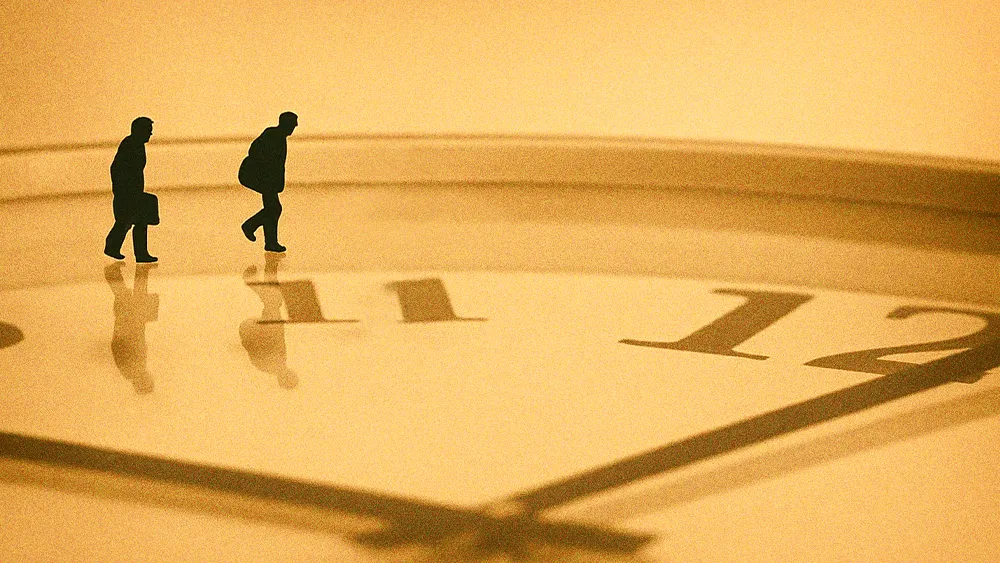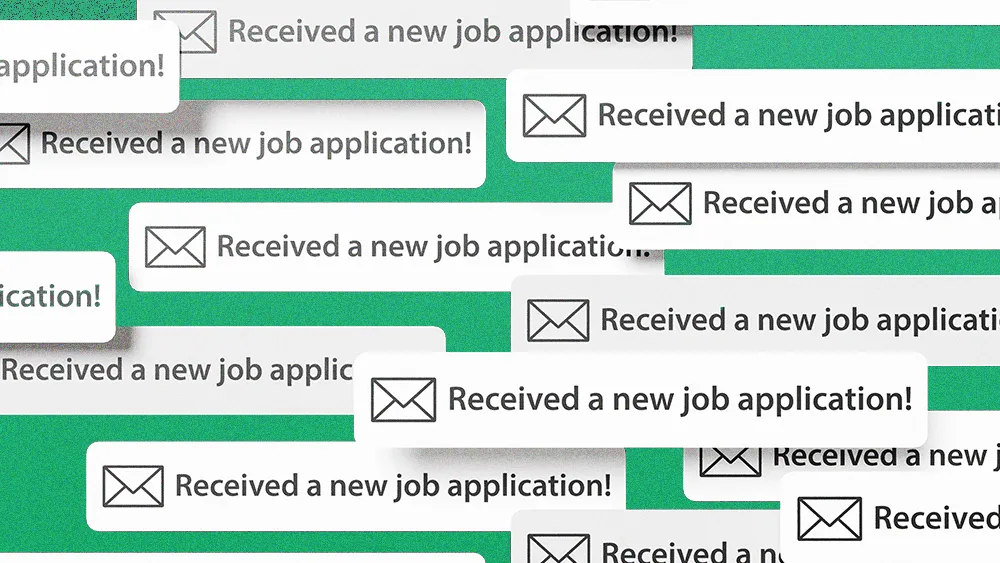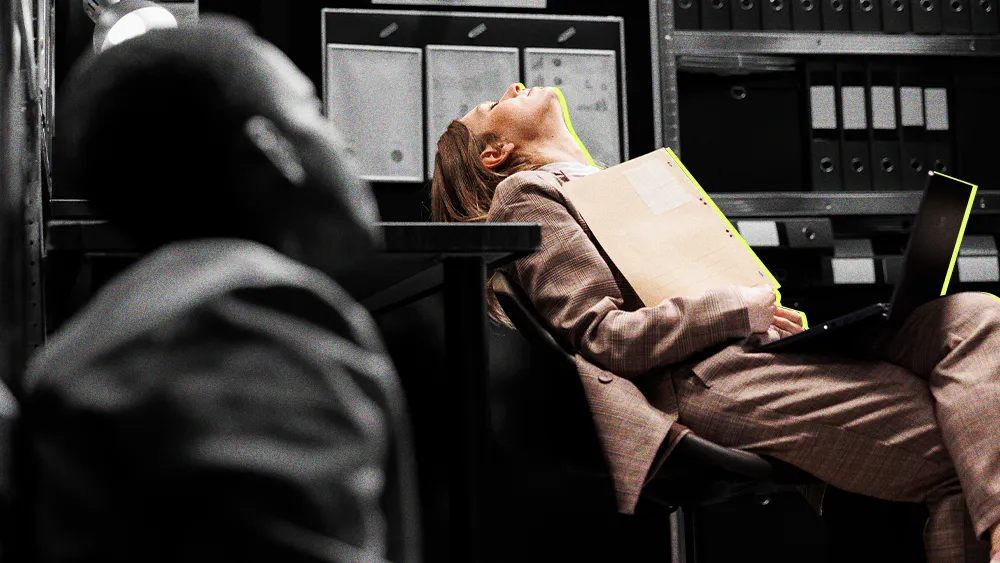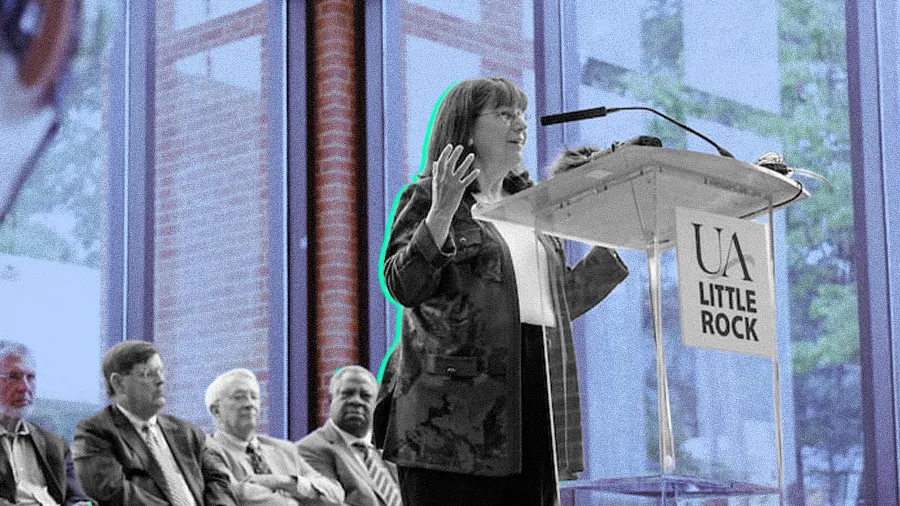The secret to beating tech’s ‘9-9-6’ burnout is finding a sustainable work rhythm

Key Points
As the “9-9-6” work culture returns to tech, experts begin to question its long-term sustainability.
Chris Mannion, Founder of the workforce optimization firm Meander, argues that the premise of “hustle culture” is a myth that ignores the necessity of recovery.
Drawing from his experience as an Aerospace Engineer in the Royal Navy, Mannion explains that peak performance requires rhythmic cycles of work and rest.
He explores the pressures facing employees and the strategic risks for companies, such as burning through the talent pipeline.
Tech teams could learn a lot from the cyclical military model. Plan true sprints around seasonal demands, then build in time for decompression and recalibration. That’s how you sustain performance and keep people engaged without burning them out.

Chris Mannion
Founder
Meander
The “9-9-6” work culture is quietly resurfacing in the tech world, with the grueling 9 a.m. to 9 p.m., six-day schedule fueled by the scramble to build and launch new AI tools. Long hours themselves aren’t revolutionary, but this latest wave is easier to trace, with office credit card data revealing a steady hum of weekend activity. For some, it’s the price of victory in a high-stakes market. For others, it’s a productivity mirage that burns people out long before it delivers results.
Chris Mannion isn’t buying it. The Founder of Meander, a company that builds a “Headcount Operating System” for private equity firms, he has spent his career fine-tuning how teams work. His view was shaped at Wayfair, where he led hiring innovation, and before that as an Aerospace Engineer in the Royal Navy. Those experiences led him to a simple but radical belief: the best teams don’t sprint forever. They work in rhythms.
The problem, Mannion explains, is that tech has forgotten a core principle of every other high-performance field: there is no peak performance without recovery. “In the military, you build up, deploy for intense operations, then recover and decompress,” he says. “Professional sports work the same way, with an on-season and an off-season. Tech is the outlier. There is no off-season, no reset. It’s just constant full capacity, and eventually that catches up with people.”
Mannion challenges the 9-9-6 mindset from three angles: his military background, tech theory, and the lessons of his first startup. For the “makers” inside any organization, he says longer hours rarely lead to better results and often just create more mistakes to fix later.
The fatigue factor: “If you have people working 12 hours straight, fatigue builds up and you start to see errors,” Mannion says. “In software development, where you’re solving complex problems all day, your effectiveness eventually starts to drop and ramp down.”
A tale of two schedules: “Paul Graham, the YC founder, wrote about dividing time into ‘maker’ and ‘manager’ schedules,” he notes. “Makers, the people actually building things, need long, uninterrupted stretches to do their best work. Managers can fill a 12-hour day with meetings, but that rhythm doesn’t work for someone who has to write code.” When those boundaries blur, creativity and focus are the first casualties.
Startup setbacks: It’s a lesson Mannion learned the hard way. “At my first startup, if my engineering team worked 12 to 16 hours a day, they made mistakes,” he recalls. “We ended up spending more time fixing those mistakes than we ever gained from the extra hours. I eventually found that 8-hour shifts delivered the best results. Three 8-hour shifts outperformed two 12-hour ones when measured over 30, 60, or 90 days.”
As teams grow, the impact of long hours compounds. What starts as fatigue on a small team can turn into large-scale burnout and churn when applied across thousands of employees. A startup might recover quickly, but an enterprise can’t replace talent at that rate without serious consequences
The scaling trap: If a 50-person startup loses half its engineers, replacing them is hard but manageable,” Mannion says. “If a company the size of Amazon does the same, it risks exhausting the entire talent pool and slowing innovation. Large enterprises have to think carefully about how they work or they’ll burn through the very market of labor they depend on.”
Keeping up with the Joneses: So why do employees opt into this culture? The answer lies in a mix of internal competition and external fear, often fueled by shared equity incentives. “There’s pressure coming from every direction,” Mannion says. “When everyone around you is pushing harder, you feel you have to keep up. Add AI into the mix, a machine that never sleeps and improves every six months, and it’s easy to see why people start believing they need to work 16-hour days just to stay in the game.”
For Mannion, the way forward isn’t about working harder but working in rhythm. Sustainable performance, he argues, means building in cycles of push and pause instead of running at full speed all year. Tech teams in the 9-9-6 model behave like special forces, he says, always on alert and burning out fast. The smarter play is to think like a well-trained army, where rest, recalibration, and planning are part of the mission.
Rest for the best: “Tech teams could learn a lot from the cyclical military model,” he says. “Plan true sprints around seasonal demands, then build in time for decompression and recalibration. That’s how you sustain performance and keep people engaged without burning them out.”
The future of the trend remains uncertain, resting on a question Mannion leaves hanging in the air. “What’s going to change?” he asks. “Will leaders decide this isn’t how they want to run their businesses, or will turnover get so high that the market forces their hand?” It’s a sharp echo of the Great Resignation, when talent held the upper hand and companies had to adapt or lose people fast. The question now is whether this correction will come from foresight or fallout. “It’s going to be an interesting 12 months,” Mannion concludes.
There’s pressure coming from every direction. When everyone around you is pushing harder, you feel you have to keep up. Add AI into the mix, a machine that never sleeps and improves every six months, and it’s easy to see why people start believing they need to work 16-hour days just to stay in the game.

Chris Mannion
Founder
Meander
There’s pressure coming from every direction. When everyone around you is pushing harder, you feel you have to keep up. Add AI into the mix, a machine that never sleeps and improves every six months, and it’s easy to see why people start believing they need to work 16-hour days just to stay in the game.

Chris Mannion
Founder
Meander
Related articles
TL;DR
As the “9-9-6” work culture returns to tech, experts begin to question its long-term sustainability.
Chris Mannion, Founder of the workforce optimization firm Meander, argues that the premise of “hustle culture” is a myth that ignores the necessity of recovery.
Drawing from his experience as an Aerospace Engineer in the Royal Navy, Mannion explains that peak performance requires rhythmic cycles of work and rest.
He explores the pressures facing employees and the strategic risks for companies, such as burning through the talent pipeline.

Chris Mannion
Meander
Founder

Founder
The “9-9-6” work culture is quietly resurfacing in the tech world, with the grueling 9 a.m. to 9 p.m., six-day schedule fueled by the scramble to build and launch new AI tools. Long hours themselves aren’t revolutionary, but this latest wave is easier to trace, with office credit card data revealing a steady hum of weekend activity. For some, it’s the price of victory in a high-stakes market. For others, it’s a productivity mirage that burns people out long before it delivers results.
Chris Mannion isn’t buying it. The Founder of Meander, a company that builds a “Headcount Operating System” for private equity firms, he has spent his career fine-tuning how teams work. His view was shaped at Wayfair, where he led hiring innovation, and before that as an Aerospace Engineer in the Royal Navy. Those experiences led him to a simple but radical belief: the best teams don’t sprint forever. They work in rhythms.
The problem, Mannion explains, is that tech has forgotten a core principle of every other high-performance field: there is no peak performance without recovery. “In the military, you build up, deploy for intense operations, then recover and decompress,” he says. “Professional sports work the same way, with an on-season and an off-season. Tech is the outlier. There is no off-season, no reset. It’s just constant full capacity, and eventually that catches up with people.”
Mannion challenges the 9-9-6 mindset from three angles: his military background, tech theory, and the lessons of his first startup. For the “makers” inside any organization, he says longer hours rarely lead to better results and often just create more mistakes to fix later.
The fatigue factor: “If you have people working 12 hours straight, fatigue builds up and you start to see errors,” Mannion says. “In software development, where you’re solving complex problems all day, your effectiveness eventually starts to drop and ramp down.”
A tale of two schedules: “Paul Graham, the YC founder, wrote about dividing time into ‘maker’ and ‘manager’ schedules,” he notes. “Makers, the people actually building things, need long, uninterrupted stretches to do their best work. Managers can fill a 12-hour day with meetings, but that rhythm doesn’t work for someone who has to write code.” When those boundaries blur, creativity and focus are the first casualties.
Startup setbacks: It’s a lesson Mannion learned the hard way. “At my first startup, if my engineering team worked 12 to 16 hours a day, they made mistakes,” he recalls. “We ended up spending more time fixing those mistakes than we ever gained from the extra hours. I eventually found that 8-hour shifts delivered the best results. Three 8-hour shifts outperformed two 12-hour ones when measured over 30, 60, or 90 days.”

Chris Mannion
Meander
Founder

Founder
As teams grow, the impact of long hours compounds. What starts as fatigue on a small team can turn into large-scale burnout and churn when applied across thousands of employees. A startup might recover quickly, but an enterprise can’t replace talent at that rate without serious consequences
The scaling trap: If a 50-person startup loses half its engineers, replacing them is hard but manageable,” Mannion says. “If a company the size of Amazon does the same, it risks exhausting the entire talent pool and slowing innovation. Large enterprises have to think carefully about how they work or they’ll burn through the very market of labor they depend on.”
Keeping up with the Joneses: So why do employees opt into this culture? The answer lies in a mix of internal competition and external fear, often fueled by shared equity incentives. “There’s pressure coming from every direction,” Mannion says. “When everyone around you is pushing harder, you feel you have to keep up. Add AI into the mix, a machine that never sleeps and improves every six months, and it’s easy to see why people start believing they need to work 16-hour days just to stay in the game.”
For Mannion, the way forward isn’t about working harder but working in rhythm. Sustainable performance, he argues, means building in cycles of push and pause instead of running at full speed all year. Tech teams in the 9-9-6 model behave like special forces, he says, always on alert and burning out fast. The smarter play is to think like a well-trained army, where rest, recalibration, and planning are part of the mission.
Rest for the best: “Tech teams could learn a lot from the cyclical military model,” he says. “Plan true sprints around seasonal demands, then build in time for decompression and recalibration. That’s how you sustain performance and keep people engaged without burning them out.”
The future of the trend remains uncertain, resting on a question Mannion leaves hanging in the air. “What’s going to change?” he asks. “Will leaders decide this isn’t how they want to run their businesses, or will turnover get so high that the market forces their hand?” It’s a sharp echo of the Great Resignation, when talent held the upper hand and companies had to adapt or lose people fast. The question now is whether this correction will come from foresight or fallout. “It’s going to be an interesting 12 months,” Mannion concludes.




